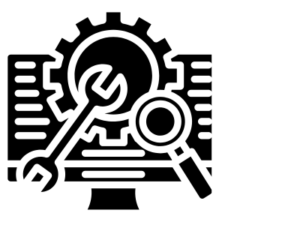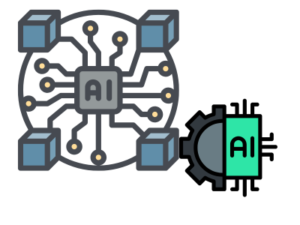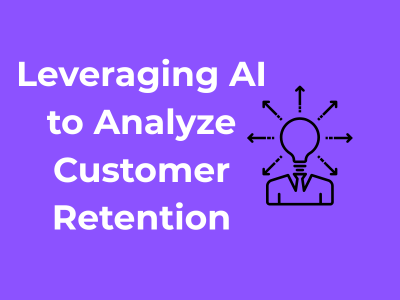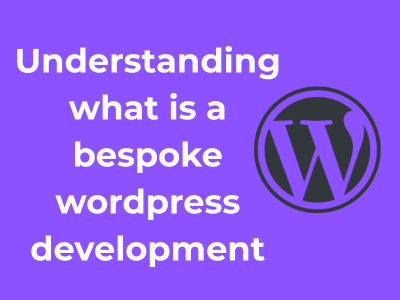When it comes to understanding customers, it’s easy to get stuck in the rut of traditional metrics—transaction history, demographics, or simple satisfaction surveys. But let’s be honest, can these surface-level stats really tell you the whole story about why a customer stays or leaves? Actually they can’t, that’s where Artificial Intelligence (AI) swoops in like a hero, unveiling layers of behavior that typically go unnoticed making Solving problems with AI-a game changer.
Lets discuss its role in daily routine
Think of customer behavior as an iceberg. The stuff above water—the visible part—might be their latest purchase or a complaint logged with your customer service team. But lurking below is a treasure trove of hidden behaviors. These include how frequently customers browse your site without purchasing, their response time to emails, or even the subtle sentiment hidden in their feedback comments. AI is the ultimate diver, capable of uncovering these deeper insights.
For example, AI doesn’t just track purchasing frequency; it analyzes browsing patterns, cart abandonment rates, clicks, and even pauses in decision-making. Did a customer leave a page after lingering for two minutes? That hesitation might hint at pricing concerns, usability friction, or missing information.
Spotting Patterns with Precision
AI doesn’t just collect data—it weaves it into meaningful patterns that traditional analytics might miss. Let’s break it down:
- Customer Segmentation: AI doesn’t lump everyone into generic “high-value customer” buckets. It slices through data to segment users based on nuanced behaviors, such as how likely they are to churn after a price increase or their openness to upselling opportunities.
- Behavioral Correlations: Did you know that your customers who buy two or more items within 24 hours are twice as likely to stick around for six months? AI spots these correlations and tells you what matters most for retention.
- Natural Language Processing (NLP): This AI capability can analyze customer reviews, chat logs, and social media posts to determine satisfaction through tone, sentiment, and even specific phrases customers use frequently.
Avoiding the “Shiny Object Syndrome”
Ever heard the term “data-rich but insight-poor”? That’s what happens when businesses try to rely on bulky, superficial data. Sure, knowing your Net Promoter Score (NPS) is helpful, but actionable insights need granularity. AI prevents you from falling into the trap of chasing metrics that just look good in quarterly presentations. It pushes you to truly understand the “why” behind your customer actions.
Retail giants and small businesses alike have started to harness these capabilities. For instance, Amazon doesn’t just know your purchase history; it knows your browsing trends, wishlist behavior, and even the reviews you tend to read. AI models help the platform decide what recommendations to show you, keeping you engaged and coming back for more.
Practical Advice: Start Small, Think Big
If the idea of diving into complex customer data feels overwhelming, relax! You don’t have to build an AI empire overnight. Begin with a single capability like automating customer reviews’ sentiment analysis or exploring shopping patterns for one product category. From there, gradually incorporate more sophisticated behavioral metrics.
Remember, the real power of AI lies in its ability to connect dots that you didn’t even know existed. It turns data into stories, stories into strategies, and strategies into success. By leveraging AI to decipher behavior far beyond the basic metrics, you step into a world where insights aren’t just numbers—they’re actionable opportunities.
Patterns Hidden in Plain Sight: What Conventional Tools Miss

Let’s face it—traditional tools for customer retention can be helpful but often fail to dig deep where it matters. They tend to focus on surface-level analytics: sales reports, click-through rates, or churn numbers. While these metrics provide valuable insights, they usually tell only part of the story. What about the subtle patterns and unspoken signals hidden in the customer journey? This is where Artificial Intelligence (AI) comes to the rescue, acting as a magnifying glass for the nuances conventional tools might overlook.
Why Conventional Tools Fall Short
Traditional metrics and reporting methods are often reactive, meaning they focus on what has already happened. For instance:
- Tracking monthly churn doesn’t explain why customers are leaving.
- Customer satisfaction scores may highlight an issue but don’t reveal the underlying cause.
- Engagement metrics like page views or time spent on-site don’t capture intent or emotional connection.
These tools might tell you the “what,” but they leave you guessing about the “why.” And when you’re in the dark about the “why,” crafting a retention plan can feel like throwing darts blindfolded.
AI: The Decoder of Hidden Patterns
AI is uniquely equipped to analyze vast amounts of data and uncover relationships that might not be immediately obvious to the human eye. It doesn’t just collect information; it connects the dots. What’s revolutionary is its ability to find patterns at scale and speed:
- Spotting dips in usage frequency that hint at disengagement.
- Identifying clusters of customers who behave similarly—perhaps they’re all at risk of churn.
- Noticing inconsistencies in customer purchase cycles that might otherwise slip through the cracks.
For example, a conventional tool might tell you that a group of users stopped buying a product, but AI can analyze behavioral trends and pinpoint why. Maybe they stopped purchasing because your competitors introduced a better deal, or perhaps they didn’t understand how to use your product effectively. Armed with this deeper understanding, you can tailor your retention strategies to address the root cause.
Engagement Signals You May Be Missing Without AI
Customers leave behind digital bread crumbs every time they interact with your brand. AI makes it possible to pick up on these subtle signals that could indicate loyalty—or a waning interest. Here are a few examples:
- Drop-offs in Interactions: Regular users suddenly reduce their activity? AI can flag these patterns early.
- Sentiment Analysis: It goes beyond ratings and reviews to analyze the tone of customer feedback in emails, social media, or chat support.
- Micro-behaviors: Tiny actions like hovering over a product but not buying or abandoning a customer service query halfway.
Traditional tools might overlook these details because managing such granular insights manually is nearly impossible. With AI, though? It’s a breeze—and incredibly insightful too.
Looking Deeper for Smarter Retention
The magic of AI lies in its ability to see the beauty in complexity. It doesn’t just examine what customers are doing; it asks why they’re doing it, enabling brands to make decisions that feel almost clairvoyant. By uncovering patterns hidden in plain sight, AI empowers businesses to anticipate needs, address customer concerns preemptively, and ultimately foster lasting loyalty.
But remember, as powerful as AI is, it’s just a tool—the real power lies in combining its capabilities with human intuition. Together, they create a winning formula for understanding your customers on a level traditional methods could never achieve.
The Role of Predictive Models in Retention Strategy
Have you ever felt like your customers are slipping through your fingers, despite all the ad campaigns, loyalty programs, and cheery emails you’ve sent their way? Well, it’s not just you. Retaining customers while keeping them happy and engaged is no small feat. But here’s the good news—predictive models powered by AI are here to save the day.
Let’s talk about how predictive models work and, more importantly, how they can become the cornerstone of your customer retention strategy. Spoiler alert: it’s fascinating and surprisingly accessible!
What Exactly is a Predictive Model?
Think of predictive models as the fortune tellers of customer behavior, but with a data-driven crystal ball. These models are AI algorithms that sift through mountains of customer data to forecast future behavior patterns. They won’t tell you which movie is going to win the Oscars, but they will let you know if your customer is likely to churn, if they’re about to make another purchase, or even if they’re open to upgrading their subscription.
The magic lies in analyzing historical data points—think purchase history, browsing behavior, and responses to past campaigns. Based on this treasure trove of insights, predictive models generate actionable outputs that you can use to strategically target individual customers or entire segments.
How Can Predictive Models Strengthen Retention?
The real power of predictive models is their ability to reveal retention risks and opportunities long before you or your team would spot them naturally. Here’s how they make an impact:
- Identifying At-Risk Customers: Not every quiet customer is dissatisfied, but some truly are. Predictive tools can analyze silence (e.g., a gap in log-ins or purchases) to determine whether it points to potential churn. Acting on these insights means you can send a well-timed offer or personalized email to re-engage them.
- Anticipating Customer Needs: Predictive models don’t just flag negatives; they can also identify opportunities. For instance, if data shows a spike in searches for a related product, you can create tailored recommendations to cross-sell or up-sell.
- Prioritizing the High-Value Customers: Every business has MVP (Most Valuable Player) customers. AI helps you predict who they are, so you can develop targeted strategies to keep this group from straying to competitors.
Real-World Example: How Predictive Models Shine
Let’s make this concrete with a classic e-commerce scenario. Imagine you’re running an online fashion store, and data points from a repeat customer show a consistent drop-off in purchases over the last quarter. Without being told, a predictive model will raise a churn alert, suggesting that this customer might be gradually disengaging. The system can generate specific recommendations, such as offering a loyalty discount or re-targeting them with products they’ve favorited in the past.
If you trust the model’s advice and act ASAP, you’ve not only saved the customer but also reinforced their loyalty—and all without the guesswork.
Tips for Getting the Best Out of Predictive Models
Here are a few professional tips to maximize the potential of predictive models:
- Start Simple: Don’t try to predict everything at once. Begin with straightforward goals like lowering churn rate or increasing repeat purchases.
- Data is Your Fuel: The better your data—think clean, relevant, and comprehensive—the more accurate your predictions will be.
- Monitor and Fine-Tune: Predictive models aren’t static. Be sure to re-train them periodically as customer behavior evolves over time.
From Churn Prediction to Proactive Engagement
When it comes to retaining your customers, relying on reactive strategies is no longer cutting it. That’s where artificial intelligence (AI) shines—specifically, in helping businesses shift from simply predicting churn to actively engaging customers in ways that keep them coming back. Let’s have a friendly chat about how AI can transform customer retention from a game of catch-up to a proactive powerhouse!
The Shift from Prediction to Prevention
Predicting churn used to be the go-to move for businesses. AI has stepped up, giving companies the ability to spot warning signs long before customers decide they’re jumping ship. But here’s the twist: prediction isn’t the end goal—preventing churn is. Modern AI takes things up a notch by enabling businesses to gear toward “proactive engagement”, where the focus is all about delighting your customers and addressing potential issues before they “even think”about leaving.
For example, if AI notices a dip in activity from one of your loyal customers, it can prompt custom suggestions—like a thoughtful email, a discount, or a tailored recommendation—to re-spark their interest. Think of it as saying, “Hey, I see you, and I value you!” in a way that feels personal and timely.
AI’s Role in Personalizing Customer Interaction
Customers don’t just want to feel like another name on your list—they want experiences that resonate with *them*. AI tools excel here by analyzing tons of data and creating hyper-personalized touchpoints. For instance, AI models can use past purchase histories, browsing behaviors, or even social media trends to craft a unique journey for each customer.
Here are some ways AI brings this personal touch to proactive engagement:
- Custom Offers: Predict what discounts or bundles a customer may truly value based on their behavior.
- Engaging at the Right Time: AI knows when your customers are most active or responsive—no more guessing when to reach out!
- Content Recommendations: Suggest blog posts, videos, or webinars that align with their interests or needs.
The beauty of AI is that these actions feel human, even though they’re powered by sophisticated algorithms. Your customers see the effort, while you enjoy better retention rates—talk about a win-win situation!
Creating Feedback Loops That Actually Work
Here’s an insider tip: businesses that take advantage of AI also become remarkably skilled at building effective feedback loops. AI can analyze direct customer feedback *and* infer insights from their nonspecific behaviors (like decreased app usage or unfulfilled shopping carts). From there, businesses can refine their approach. For instance:
- Spot pain points (e.g., clunky navigation or lackluster options).
- Quickly implement solutions based on real-time data.
- Offer preemptive fixes (like step-by-step tutorials or live support).
Proactive doesn’t have to mean overwhelming. Often, subtle tweaks guided by AI are enough to keep a customer happy and engaged.
Proactivity Builds Long-Term Loyalty
Here’s the thing: predictive churn models are useful, but *proactivity* builds trust. AI empowers businesses to demonstrate that they care—not just about numbers, but about the *people* behind them. This resonates on a deeper level, creating customers who aren’t just satisfied, but genuinely loyal.
So, don’t just settle for catching customers as they leave. Let AI help you hold the door wide open, make them feel valued, and keep them around for the long haul. It’s not magic—it’s strategy powered by smart tech and a whole lot of care!
Industry-Specific Insights: How Different Sectors Use AI

Let’s talk about how different industries are making the most of AI to keep their customers happy and coming back for more. Every sector has its unique challenges and opportunities, and AI is proving to be a game-changer across the board. Whether we’re diving into retail, healthcare, financial services, or beyond, the adaptability of AI tools is offering targeted solutions. So, let’s unpack the magic by industry, shall we?
Retail: Personalization at Scale
In the retail world, it’s all about relationships and experiences. Ever wonder how your favorite online store just “knows” what you want to buy next? AI isn’t playing a guessing game—it’s analyzing your browsing patterns, purchase history, and even social media activity to tailor recommendations just for you.
- Dynamic pricing : Retailers use AI to adjust pricing in real time, ensuring competitive offers that retain customers without sacrificing profits.
- Predictive restocking : By analyzing customer purchasing trends, AI can predict demand and reduce “out of stock” scenarios, which helps keep shoppers coming back.
- Personalized marketing : From targeted emails to app notifications, retailers use AI to make their marketing feel personal and relevant.
It’s fast, efficient, and makes customers feel valued—what customer wouldn’t stick around for that?
Healthcare: Better Outcomes Through Engagement
In healthcare, AI is revolutionizing patient retention—not just in keeping individuals connected to their providers but also in improving their overall experience.
- Appointment reminders and follow-ups : AI-powered systems ensure patients stick to their treatments or check-up schedules, reducing no-shows.
- Predictive health analytics : By analyzing patient data, AI can flag risks early, prompting proactive communication from healthcare providers.
- Telehealth enhancements : AI bridges the gap between healthcare providers and patients, making remote consultations feel just as personalized as in-person visits.
It’s all about fostering trust and showing patients that their well-being is number one. In turn, patient loyalty skyrockets.
Financial Services: Proactive Fraud Detection and Beyond
When it comes to money, trust is everything. Financial institutions use AI not only to protect their customers but to create a seamless banking experience. This is where customer retention thrives.
- Fraud detection : AI provides real-time monitoring to spot unusual activity, reassuring customers that their money is safe.
- Virtual assistants : Chatbots driven by AI handle inquiries 24/7, ensuring customers get the help they need whenever they need it.
- Credit scoring models : AI creates a more accurate picture of a customer’s creditworthiness, helping build stronger relationships through tailored financial products.
Focused on security and convenience, AI empowers financial institutions to stay ahead of the game—and keep customers loyal for the long haul.
Entertainment: Keeping the Spotlight on Engagement
In the entertainment sector, it’s about keeping people engaged for longer. AI shines here by creating tailored experiences that speak directly to individual interests:
- Content recommendations : Streaming platforms like Netflix and Spotify use AI to analyze your viewing or listening habits, serving up binge-worthy suggestions.
- Sentiment analysis : AI scans reviews and feedback to gauge what customers love (or don’t) and tweak offerings accordingly.
- Game design optimization : In gaming, AI adjusts to player behavior in real time, ensuring every second is captivating.
Catering to preferences at such a granular level means customers have no reason to look elsewhere—AI has already made sure of that!
Integrating AI Tools with Existing Retention Strategies
Hey there, tech enthusiast! Let’s talk about something that’s becoming increasingly important in the world of customer retention: integrating AI tools with your existing strategies. If you’re already working hard to keep your customers happy and loyal, adding AI to the mix can take things to the next level. But how do you do it seamlessly? Let’s dive in!
Why Integration Matters
First off, why is it so important to integrate AI tools with existing retention strategies? Well, it’s like cooking a recipe you’ve mastered but adding a secret new ingredient that enhances the flavor—AI can amplify your strategies. It’s about working smarter, not harder. Instead of replacing what’s already working, AI complements your existing efforts by automating repetitive tasks, providing data-driven insights, and offering proactive solutions.
Step 1: Assess Your Current Retention Strategy
Before introducing AI, take a good, hard look at what’s already in place. Are you analyzing customer feedback? Offering loyalty programs? Tailoring email campaigns? Understanding your current tools and methods lays the foundation for smarter integration.
Ask yourself these questions:
- What current tools or software do I use for customer communication and analytics?
- Where are there gaps in my ability to retain customers?
- What data am I already collecting, and how am I using it?
Step 2: Understand What AI Can Offer
You don’t need to be a tech genius to leverage AI effectively, but you should know what it brings to the table. Some of the areas where AI shines include:
- Personalization: AI can analyze behavior and preferences to craft highly tailored customer experiences.
- Automation: Free up your team by automating processes like follow-up emails, reminders, or support responses.
- Customer Insights: By mining massive amounts of data, AI can identify patterns you might have never noticed manually.
- Predictive Analytics: AI doesn’t just tell you what’s happening—it predicts future trends, like which customers are likely to churn.
Step 3: Choose Scalable Solutions
When choosing AI tools to plug into your system, focus on scalability. Look for solutions that can grow with your business rather than outgrowing your needs after a year. Whether it’s a customer relationship management (CRM) platform with built-in AI or a standalone predictive analytics tool, ensure it integrates well with your existing tech stack.
Step 4: Train Your Team
Your team is the heart of your retention strategy, so don’t leave them out of the loop. Even the most advanced AI tools require human touchpoints. Invest in training and insist on comprehensive onboarding to make sure your team knows how to use AI tools effectively. AI should empower them, not overwhelm them.
Step 5: Continuously Monitor and Optimize
Finally, treat AI integration like a living process. Experiment, measure results, and refine continually. Remember, the beauty of AI lies in its adaptability—it will evolve with your needs. Use key performance indicators (KPIs) to measure success and adjust your strategy along the way.
Measuring Success: Benchmarking AI-Driven Retention Approaches
Alright, you’ve implemented some slick AI tools into your retention strategy, and everything feels like it’s running smoother than a freshly paved road. But how do you know if all these fancy AI-powered insights are truly moving the needle? It’s time to talk about measuring success and benchmarking your AI-driven retention efforts. Don’t worry, we’ll break this down into manageable chunks. Grab your coffee, and let’s dig in!
Identify Your Retention Success Metrics
First things first, you need to define what success actually looks like. Retention isn’t just about holding onto customers; it’s about creating long-term relationships that benefit both your business and your audience. Here’s where it gets fun: AI allows you to look at success from multiple angles because it can process huge amounts of data way faster than any human ever could. But what should you measure?
- Customer Retention Rate (CRR): This is the bread and butter. How many of your customers are sticking around, and how many are walking out the door?
- Customer Lifetime Value (CLV): AI can help you understand not just how long customers are sticking around, but how much they’re spending over that period.
- Engagement Metrics: Things like how often a customer interacts with your brand—emails clicked, products viewed, or services used.
- Churn Rate: Here’s where predictive AI can shine, helping you prevent customer loss by identifying problems before they happen.
Set Benchmarks Using AI Insights
Here’s where it gets exciting! Use your existing data to create benchmarks that AI tools can monitor. AI isn’t just about crunching numbers; it’s about recognizing trends and giving you actionable insights. Let’s say your current CRR is 70%. By combining AI’s ability to detect patterns with your industry’s average benchmarks, you can create a realistic goal—like hitting 80% retention within the next year.
A practical tip: Start small. Set short-term benchmarks before diving into longer-term goals. It’s better to celebrate small wins along the way than to feel overwhelmed by the big picture.
Test, Adjust, Repeat
If we had to pick a tagline for AI in customer retention, it would probably be “constant improvement.” The beauty of AI-driven tools is their adaptability. Did that new SMS campaign result in a 10% higher engagement rate last month? Fantastic! AI can tell you why it worked, allowing you to refine and repeat it.
Alternatively, if something doesn’t perform as expected, don’t sweat it. AI can pinpoint the gaps, whether it’s misaligned messaging, poor timing, or even product preferences you hadn’t considered. The key here is to treat AI as a partner in your strategy, one that learns and grows with your business.
Ask the Right Questions
While numbers are incredibly insightful, don’t forget to ask qualitative questions too: How do your customers feel about their interactions with your brand? Are they recommending you to others? AI can analyze customer sentiment through surveys, reviews, and social media to give you a holistic view of success. Pairing this human touch with hard numbers creates a balanced and insightful feedback loop.
Leverage Visualization Tools
Let’s face it, staring at spreadsheets can be a snooze fest. Thankfully, many AI-powered platforms come with sleek data visualization features. Funnels, heatmaps, dashboards—you name it. These tools can help you quickly identify where things are working and where changes are needed. Bonus: They’re perfect for wowing stakeholders during quarterly meetings!
Stay Ahead by Keeping Goals Dynamic
The world is changing every day, and so are your customers’ needs and behaviors. Make sure you’re revisiting and tweaking your benchmarks on a regular basis. What worked in 2023 might not fly in 2024—but that’s okay because AI is built to adapt to these changes. Keeping your goals dynamic ensures that you’re always ahead of the game.











